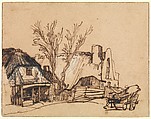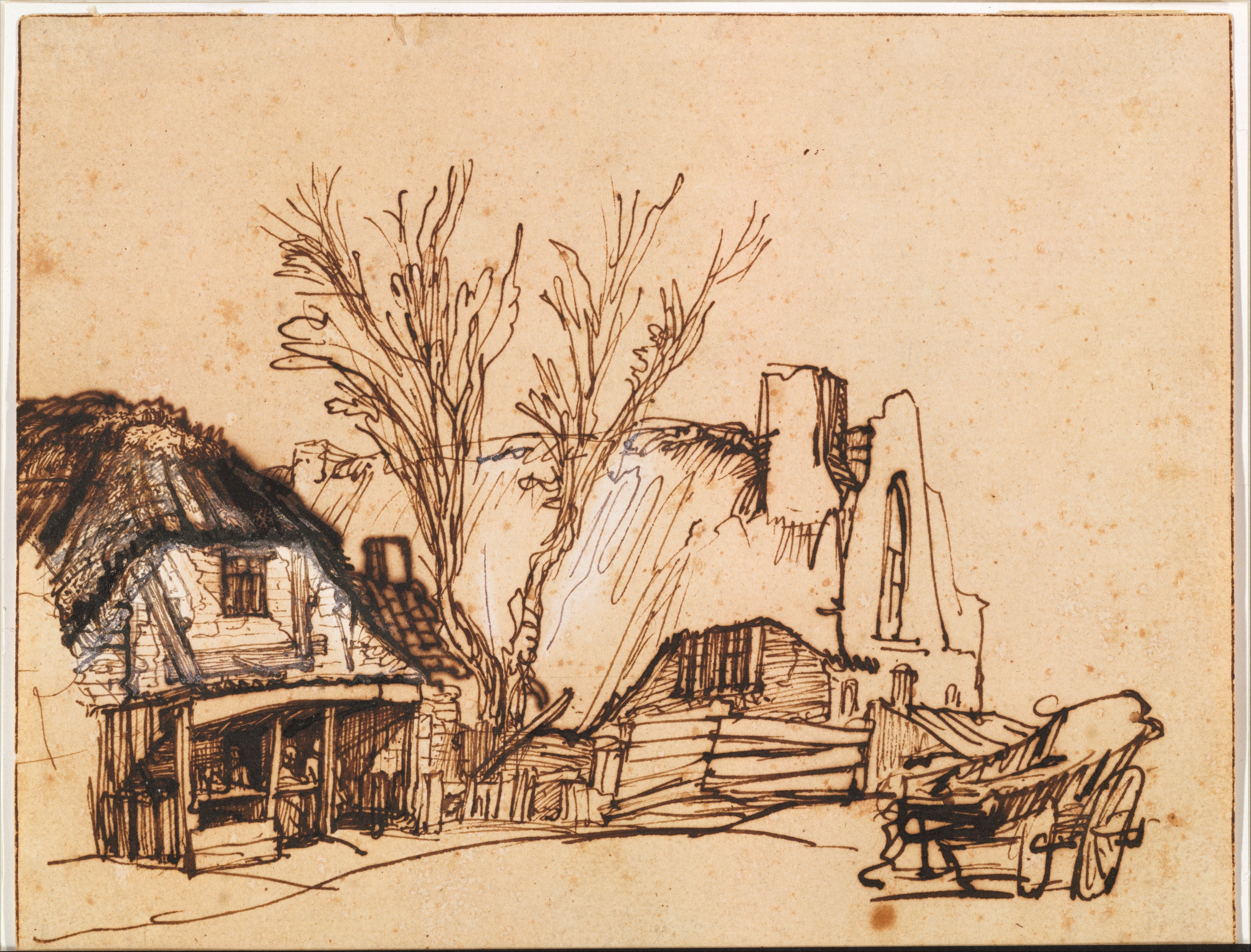Two Cottages
Rembrandt (Rembrandt van Rijn) Dutch
Not on view
Rembrandt is rightfully considered the outstanding Dutch artist of the seventeenth century. He was a masterful painter, draftsman, and etcher who keenly observed his surroundings and summarized his vision with the seeming effortless handling of the brush, pen, and stylus.
This energetic drawing deftly combines the summary and the specific. The apparent sketchiness of the second cottage and trees is as deliberately sought as the elaborately detailed first cottage, its figures, and the carriage lacking a wheel. Rembrandt appears to have used white gouache in areas where he found his pen and ink definition unacceptable. The drawing has been grouped with a number of sketches Rembrandt made in the outskirts of Amsterdam in the early 1640s, when he also produced several comparable landscape etchings.
Due to rights restrictions, this image cannot be enlarged, viewed at full screen, or downloaded.
This artwork is meant to be viewed from right to left. Scroll left to view more.



